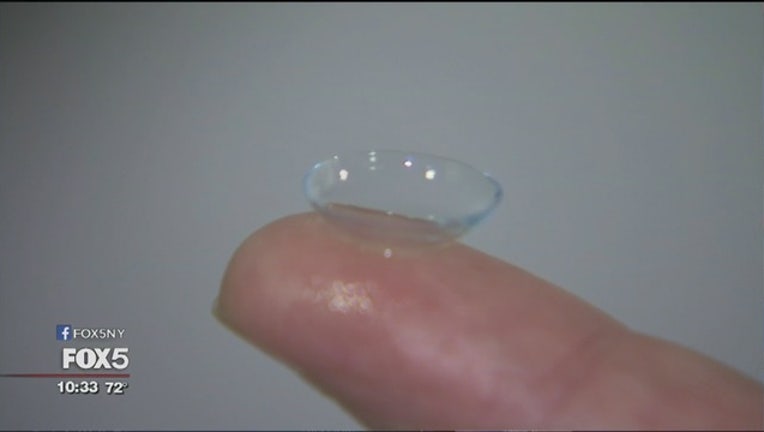How contact lens wearers can avoid a rare amoeba eye infection

NEW YORK (FOX5NY.COM) - A cornea-eating amoeba has the potential to steal your eyesight and maybe your eyeball.
"The leading cause of an amoeba infection of your cornea is having your contact lenses come in contact with water," Dr. Robert Cykiert, an ophthalmologist in New York, said. "Whether you're swimming in a lake or a river or some other water or whether you use water to store your contact lenses or some of my patients will occasionally rinse their contact lenses with tap water—it's all bad news."
The issue came to light after a rise in the number of cases in the United Kingdom of an incredibly rare illness called Acanthamoeba keratitis, caused by a single-cell organism called Acanthamoeba. The British Journal of Ophthalmology cited the tripling of cases since 2010.
Similar scenarios have resulted in cases in the United States, too; specifically in New York. Cykiert has treated some of those patients.
"The amoeba or parasite sticks to the contact lens and then it enters the cornea of the eye. Once the amoeba get into the cornea, they basically invade the cornea, they form these cysts around themselves so that our immune system can't attack them," Cykiert said. "And they basically chew up the cornea and use it as food."
Treating the infection is nearly impossible. Once the amoeba invades the eye, a patient is facing an extended course of treatment. Typically, this means multiple drugs over multiple years. And even still, the treatment is not guaranteed to eradicate the amoeba.
"This is probably the most painful infection you can have in your eyes," Cykiert said.
Between 30 percent and 40 percent of patients need corneal transplants and most often require multiple surgeries.
CDC GUIDELINES: What can I do to decrease my risk of developing Acanthamoeba keratitis?
These guidelines should be followed by all contact lens users to help reduce the risk of eye infections, including Acanthamoeba keratitis:
Visit your eye care provider for regular eye examinations.
Wear and replace contact lenses according to the schedule prescribed by your eye care provider.
Remove contact lenses before any activity involving contact with water, including showering, using a hot tub, or swimming.
Wash hands with soap and water and dry before handling contact lenses.
Clean contact lenses according to instructions from your eye care provider and the manufacturer’s guidelines.
1. Never reuse or top off old solution. Use fresh cleaning or disinfecting solution each time lenses are cleaned and stored.
2. Never use saline solution or rewetting drops to disinfect lenses. Neither solution is an effective or approved disinfectant.
3. Be sure to clean, rub, and rinse your lenses each time you remove your lenses. Rubbing and rinsing your contact lenses will aid in removing harmful microbes and residues.
Store reusable lenses in the proper storage case.
1. Storage cases should be rubbed and rinsed with sterile contact lens solution (never use tap water), emptied, and left open to dry after each use.
2. Replace storage cases at least once every three months.
Contact lens users with questions regarding which solutions are best for them should consult their eye care providers. They should also consult their eye care providers if they have any of the following symptoms: eye pain or redness, blurred vision, sensitivity to light, sensation of something in the eye, or excessive tearing.

